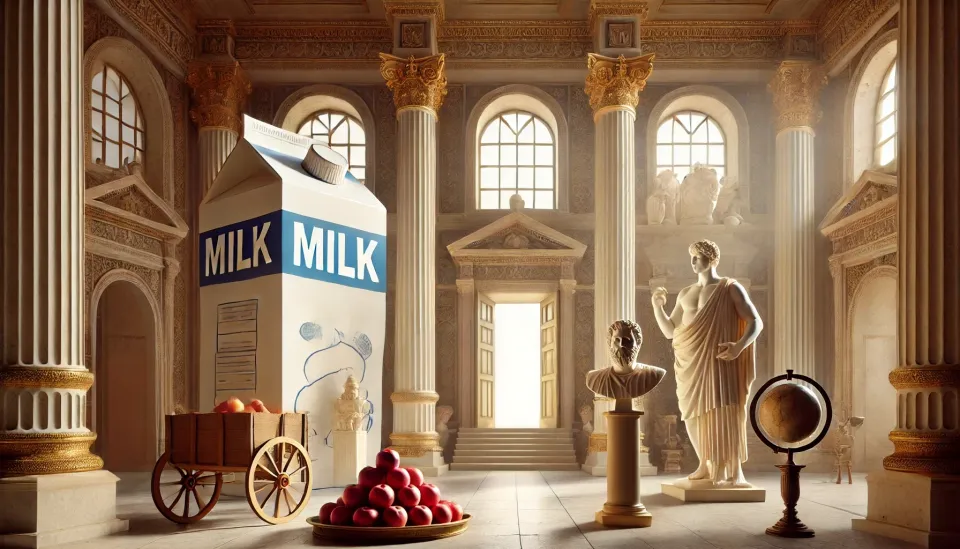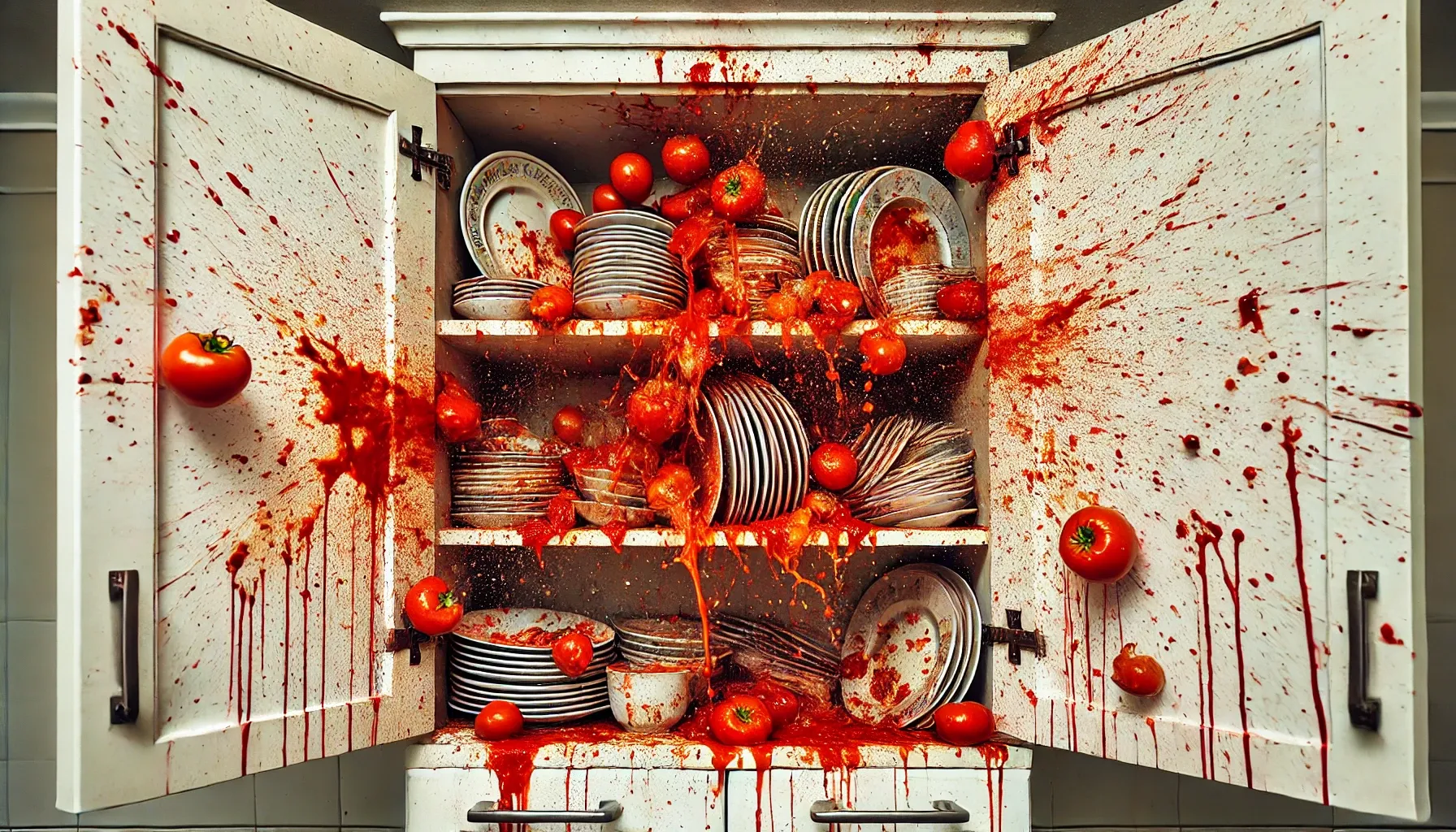The Memory Palace (learning the Loci method)

Introduction
The memory palace, also known as the Loci technique ("of places" in Latin), is a mnemonic method that dates back to ancient Greece. It is said that the poet Simonides of Ceos first used it after a tragic accident where he had to identify the bodies of victims by recalling where they had been seated at a banquet. Since then, this technique has been employed by orators, scholars, and memory champions.
Its influence has even reached popular culture. In Stephen King’s novel Dreamcatcher, characters use mental palaces to organize memories. The famous detective Sherlock Holmes refers to his "mind palace" in multiple stories, while characters like Hannibal Lecter, Aloysius Pendergast, and the main character of The Mentalist use it as a key tool for solving mysteries.
In this article, you’ll learn how to build your own memory palace and start using it with a simple example.
What is the Memory Palace?
The memory palace is a technique that involves using a familiar place (such as your home) to create a mental journey where information is stored in specific locations. This way, you not only remember what you stored but also know exactly where to find it when needed.
It’s similar to body lists but more flexible and scalable. You can combine several familiar locations—like your parents' house, school, or office—to store much larger amounts of information.
How does it work?
- Start with a well-known place, like your house. You can add more locations later if needed.
- Divide that place into specific locations that are easy to identify (kitchen, living room, etc.).
- Design a logical route through those locations, just like in body lists (e.g., in the kitchen: sink, fridge…).
- Visualize striking images at each location that represent what you need to remember.
- Follow the route step-by-step to activate those images in your mind and recall the information.
The Key: Familiarity and the PEG System
This technique is incredibly powerful because it combines two essential elements:
- Familiarity with the locations: Using places you know well makes it easier to recall locations, which activates your memories.
- Creative visualization (PEG system): Create vivid and emotional mental images that strongly connect to each location. Absurd, exaggerated, or dynamic images are easier to remember because they capture your brain’s attention.
Ready to Build Your First Memory Palace?
Let’s get started! We’ll create a memory palace with 20 locations for now.
Step 1: Choose a Familiar Place
Think of a place you know very well, like your house or apartment.
Step 2: Select 4 Rooms
List them in sequence, just as you would encounter them when walking through the house, to avoid confusion.
Example:
- Living room
- Kitchen
- Bathroom
- Bedroom
Step 3: Define 5 Locations Per Room
List these in logical order (e.g., from left to right as you face the room).
For the living room, you could use:
- Door
- Television
- Lamp
- Coffee table
- Sofa
Do the same for other rooms. Now you have 20 locations in total!
Step 4: Memorize the Route
This step is crucial. To memorize things in your memory palace, you first need to firmly remember the palace itself. Walk through the rooms mentally, always following the same order. Visualize each spot clearly.
Repeat this process several times to solidify the route: after a few minutes, after a few hours, at the end of the day, and a week later. This helps you quickly recall each position. For example, if position 16 is the nightstand, you’ll find it easily because you know each room has 5 items. Position 16 would be the second item in the fourth room (in this case, the bedroom).
Keep reviewing the route occasionally. Spaced repetition is essential for long-term memorization.
How to Use the Memory Palace
Let’s test your new memory palace with a shopping list of 10 items: milk, shampoo, tuna, eggs, bread, tomatoes, apples, strawberries, bananas, and grapes.
I’ve grouped them into the first 2 rooms, organized by store type (5 supermarket items and 5 fruits). This should make things even easier when shopping.
Feel free to replace the locations with those from your own memory palace:
- Milk: Imagine a giant cow milking itself and spilling milk at the living room door.
- Shampoo: Picture a shampoo bottle exploding against the television, covering it in bubbles and causing a short circuit.
- Tuna: A 5-kilo tuna hanging from the lamp, dripping water everywhere.
- Eggs: Eggs smashing onto the coffee table, creating a mess.
- Bread: A giant loaf of bread sitting on the sofa, wearing glasses as if watching TV.
- Tomatoes: A tomato splattering against the dish cabinet, staining it.
- Apples: Apples falling like rain from the kitchen hood.
- Strawberries: Giant strawberries overflowing from the sink.
- Bananas: A bunch of bananas hanging from the fridge handle like vines.
- Grapes: Grapes spinning inside the microwave, popping like popcorn.
Visualize these 10 scenes vividly and repeat them until you know them by heart.

Long-Term Retention
If you only need to memorize something temporarily, like a shopping list, you can simply stop visualizing the scenes afterward. They’ll fade naturally within hours.
However, with spaced repetition, you can permanently store information in your memory palace. Need to memorize a speech or study geography and history? Put your palace to the test! You can even overlay multiple independent lists without mixing them up.
Tips to Improve the Technique
- Stick to consistent structures when choosing rooms and items (e.g., always left to right).
- Work with small groups: Don’t cram 20 locations into one room. Five locations per room and 5 rooms per building is a good balance.
- Exaggerate the images: The crazier and more unrealistic, the better.
- Add emotions and movement: A giant cow is easier to recall than a milk carton.
- Practice your route: Walk through your palace frequently to reinforce associations.
Conclusion
Congratulations! You’ve built your first memory palace and tested it with a shopping list. You’ve begun exploring a powerful ancient technique—but this is just the beginning. The memory palace can be scaled to store much more complex information.
In the next article, we’ll dive into an advanced example: memorizing the 10 longest rivers in the world and their locations.
On your journey to a better memory, you can count on me, the Memory Geek, to unlock Your Memory Power, One Technique at a Time!